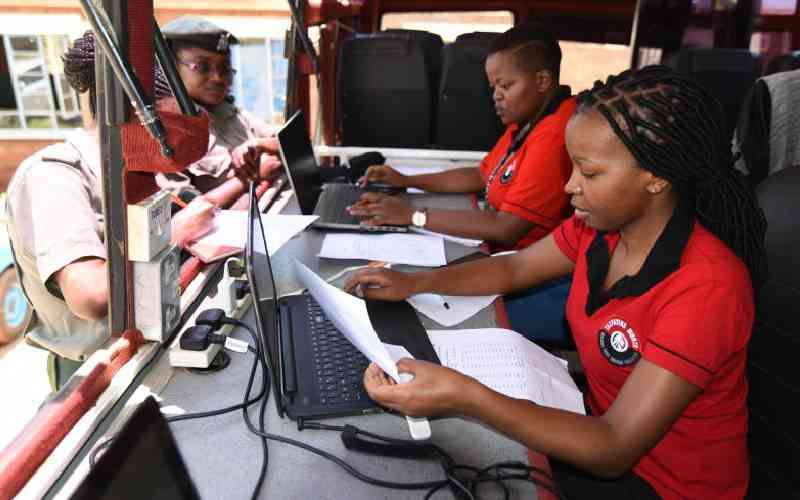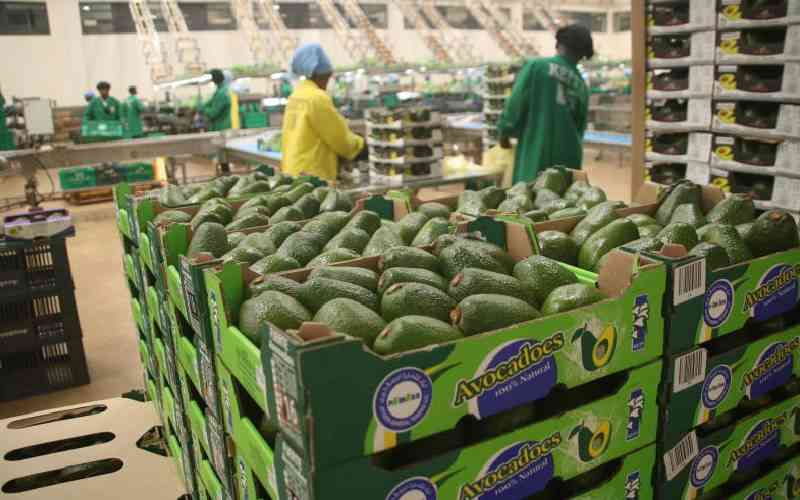Kenya has fallen at least five years behind its ambitious Vision 2030 plan that was to set it up as a middle-income economy.
An audit of the plan shows that a good number of the initiatives remain a pipe dream 10 years down the line.
The shift by the Jubilee administration to focus on the Big Four agenda has further put the blueprint in limbo as it appears to have changed the goal posts for the country.
President Mwai Kibaki launched Vision 2030 in 2008 as a vehicle to guide the country grow into a rapidly industrialising middle income nation by 2030.
His think tanks who came up with the plan envisioned a country that would provide a high quality of life to its citizens in a clean and secure environment.
The plan was broken down into three key pillars – economic, social and political – which were to be supported by a list of enablers.
Targets in the economic pillar have been the most difficult to hit for the country. One of the main deliverables was to grow the economy at an average rate of 10 per cent per year and sustain that until 2030.
But various factors and lack of accountability from Government officials have seen the country miss the target by nearly half, with the economy running on just one engine.
An analysis of the growth numbers from the Kenya National Bureau of Statistics (KNBS) shows that the country’s economy has been growing by average 5.1 per cent since 2008, moving at half the speed required.
This has seen the gross domestic product (GDP) stand at Sh7.7 trillion by the end of last year, which is half of the Sh15 trillion the economy would have closed the year at had it grown by the envisaged 10 per cent.
To get to the desired levels, the economy now needs to fire in all engines and grow by more than 15 per cent to recover the lost growth, which is a herculean task under the current economic environment.
Former Vision 2030 Delivery Secretariat Director General Gituro Wainaina says the country set itself a growth target that was a little too high.
However, he says what should concern Kenyans is whether the individual goals under the pillars are being met.
“We set the bar a little too high. Some of the projects take time in maturing and we should (study) them in 2020 during the mid-term review,” Prof Wainaina says.
Some of the areas he says the Government has not done so well include the Konza City, which should be up and running by now and the Lapsset Corridor.
Lapsset brings together Kenya, Ethiopia and South Sudan and consists of seven key infrastructure projects starting with a new berth port at Lamu, inter-regional highways, a crude oil pipeline, standard gauge railway lines from Lamu to Isiolo, Juba and Addis Ababa as well as three international airports.
Wainaina says the Big Four agenda fits within the vision, but the country needs to prioritise some of the big infrastructure projects to decide what can be done now and what can wait.
“If I was speaking as a Government bureaucrat, I would say we are now 60 per cent on target but if I was to speak as a Kenyan I will give it 40 per cent,” he says.
Agriculture had the highest number of interventions, most of which remain untouched. Those that have been started such as irrigation have met myriad challenges such as financial mismanagement.
The most ambitious plan in the agriculture sector was to set up four disease-free zones. This remains on paper. Another plan was to set up a local fertiliser factory. This at best remains just a talking point during election campaigns, with one done by an investor in Eldoret being just but a blending plant.
Vision 2030 also had huge promises for the fishing industry. The low-hanging fruits were to expand fish farming and rope in the arid and semi-arid areas. But what appears to be happening is that demand for fish has been growing at a faster rate than the fish ponds can catch up.
Worse still, Lake Victoria is over-exploited and fishermen can hardly satisfy the market. This has left consumers to rely on imports and this has opened the gates for fish from China to flood the local market.
The blueprint also envisioned putting 404,800 hectares under irrigation by 2017 especially in the arid and semi-arid areas in Turkana and Tana Delta.
On the manufacturing front, the vision planned to do a pilot metal small and medium enterprise (SME) park in Nairobi due to proximity to most important markets.
A pilot agro-processing SME park was to be located in Eldoret because of the high farming potential and access to an airport.
“A second agro-processing SME park which targets processing of fruit juices and vegetable oils will be located in Mombasa. Another will be located in Kisumu for agro-processing of vegetables, horticulture, fish and fruit. The fifth SME Park will be located at Nakuru for meat processing (with tannery),” the vision reads.
Most of these are still on paper.
On the education sector, laptops for schools still remain a moving target. By now the Government should have rolled-out a laptop programme estimated to cost Sh53 billion in all primary schools.
But this has been bogged down right from the procurement stage; competing interests and changing realities on the ground.
Despite these missteps, the Vision 2030 Secretariat is celebrating 10 years since the start of this dream this year.
The directorate says it has so much to show for the past decade. But instead of showing what has been achieved and what needs to be improved, it is only pushing one side of the story.
President Uhuru Kenyatta says everything his administration has done in his two terms of office has been geared towards achieving the dream.
Some of the achievements the Government is counting on include expansion of roads, access to electricity and the Standard Gauge Railway, the Jubilee government’s flagship project.
The President says his second term’s agenda is focusing on health, food security, jobs and housing.
“We must also tackle the demon of corruption because we (will) release funds that have previously been diverted to people’s pockets into productive use,” he says in an interview with Equity Bank Chief Executive James Mwangi to take stock of the dream.
Mr Mwangi, who is the chairman of Vision 2030 Delivery Board, maintains that both the Kibaki and Uhuru administrations have supported the dream.
When the 2030 agenda was envisioned in 2002, he says, Kenya only had 19 universities but this shot up to 59 by the end of last year. The number of technical vocational education and training institutions has also grown from 31 to 2,000.
“When you look at the health sector under the social pillar, in 2002 under-five mortality rates were at 115 per 1,000 live births. That has reduced all the way to 49,” says Mwangi.
He says when the board started, the country had only 8,900km of paved roads and this has increased to 12,000km. He also says the GDP per capita has grown from Sh27,000 to Sh167,000 in the period.
“Over the last 10 years, we have been implementing projects to put in place a foundation,” director of strategy and communications at Vision 2030 Sophie Odupoy said at a meeting to sensitise the public on the progress the country has so far made.
She said such projects include those in infrastructure, education and health. When contacted by Weekend Business, Ms Odupoy said she was out of town and would respond later to our inquiries about how missing the growth target will affect the vision.
 The Standard Group Plc is a multi-media organization with investments in media
platforms spanning newspaper print operations, television, radio broadcasting,
digital and online services. The Standard Group is recognized as a leading
multi-media house in Kenya with a key influence in matters of national and
international interest.
The Standard Group Plc is a multi-media organization with investments in media
platforms spanning newspaper print operations, television, radio broadcasting,
digital and online services. The Standard Group is recognized as a leading
multi-media house in Kenya with a key influence in matters of national and
international interest.
 The Standard Group Plc is a multi-media organization with investments in media
platforms spanning newspaper print operations, television, radio broadcasting,
digital and online services. The Standard Group is recognized as a leading
multi-media house in Kenya with a key influence in matters of national and
international interest.
The Standard Group Plc is a multi-media organization with investments in media
platforms spanning newspaper print operations, television, radio broadcasting,
digital and online services. The Standard Group is recognized as a leading
multi-media house in Kenya with a key influence in matters of national and
international interest.









